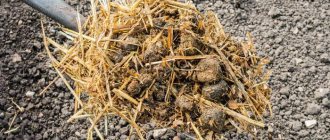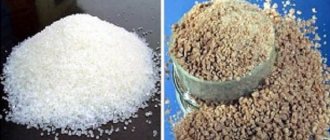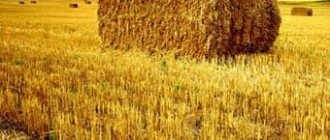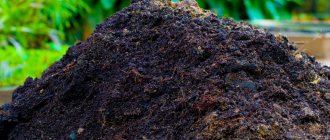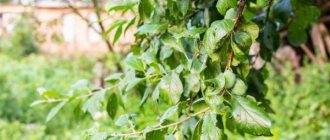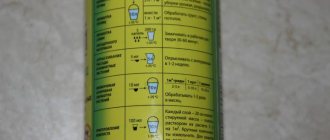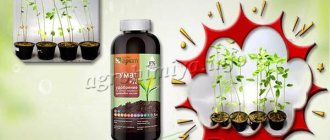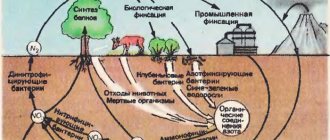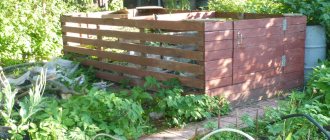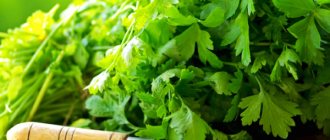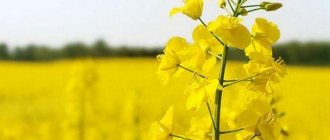General characteristics of the fertilizer
Potassium is one of the important components necessary for the normal development of plants. It increases immunity to disease and endurance under adverse conditions. But unlike phosphorus and nitrogen, it is not synthesized by the plants themselves. Therefore, it must be added to fertilizers and soil.
Potassium chloride is a naturally occurring substance that is extracted from potash ores. The fertilizer consists of 65-70% pure substance, that is, potassium, the rest is chlorine. Therefore, potassium chloride cannot be applied directly to ready-made beds, since chlorine is dangerous for plants. It is brought in during the autumn digging.
Fertilizers containing potassium are usually in the form of a granular powder that dissolves easily and quickly in water. Typically, the shelf life of potassium chloride is 6 months, but in general, if stored properly, the fertilizer can be used even after the official expiration date. But when working with it, you must take precautions, since the substance has a moderate danger to humans and animals. It can irritate the skin and mucous membranes.
Calcium chloride
This solution can be purchased at a pharmacy, as it is used to treat human diseases. However, calcium chloride is also very useful for tomatoes, which respond well to this fertilizer. This microelement is actively involved in photosynthesis and accelerates the production of carbohydrates in the tissues of seedlings. Calcium chloride is added during the active growth of tomatoes and during the flowering period. It is thanks to him that the seedlings begin to form leaves and gain green mass.
Experienced gardeners feed young shoots already at the stage of germination from seeds. At first, the sprouts have enough nutrients contained in the seed, but over time, the reserves are depleted. You should carefully monitor the development of plants in order to feed them with useful substances in time.
Signs of calcium deficiency in tomato seedlings:
- cessation of growth and development;
- thinning of the stems;
- sluggish, unhealthy appearance.
If tomatoes lack calcium during fruit formation, brown spots appear on them.
The peculiarity of calcium chloride for plant development is that it accelerates photosynthesis, participates in the production of enzymes, and promotes the transport of nutrients through plant tissues. Fertilizer protects seedlings from various diseases associated with rotting fruits. Increases the shelf life of the harvested crop, protecting against spoilage.
Fruit trees also need to be treated with calcium preparations. Experienced gardeners advise spraying the green mass throughout the growing season before harvesting the fruits. Spraying must begin from the moment the buds open. If this is not done, the leaves of the trees will begin to dry out and become covered with brown spots.
If you do not want to use a store-bought product, an infusion of wood ash can replace calcium chloride. This organic fertilizer is beneficial for all plants, and the chlorine content in the ash is not dangerous for seedlings. Grapes that are hypersensitive to chlorine can also be treated with ash. The ash also contains a whole complex of soil-enriching microelements. This distinguishes ash fertilizers from agrochemicals, since the complex of microelements is in a balanced form.
Why do plants need potassium?
Plants need to be provided with sufficient potassium for the following reasons:
- It helps balance the diet with other beneficial substances;
- Helps regulate water balance in cells;
- Increases resistance to adverse weather conditions;
- Strengthens immunity to diseases and pests;
- Promotes the formation of ovaries and tubers;
- Improves the taste of the crop;
- Increases the safety of fruits, their presentation and transportability.
Due to potassium deficiency, plants grow weak, pale, flowers and ovaries form sluggishly. With a lack of potassium, fruits turn out tasteless, small, and irregular in shape. In addition, the root system is underdeveloped, which leads to poor nutrition and rooting.
Operating principle
The pinkish tint of potassium chloride indicates its natural origin.
Proper use of potassium chloride can increase productivity and the degree of plant resistance to adverse weather and climatic factors . Potassium is an essential element, the presence of which in the soil in sufficient quantities has a positive effect on the development of agricultural crops:
- active growth of the root system occurs, main and lateral shoots are strengthened;
- seed germination improves;
- resistance to various infections and pests increases;
- frost resistance and resistance to temperature fluctuations increases;
- the likelihood of dehydration during dry periods is reduced;
- the quality of fruits improves (presentation, taste, size);
- the shelf life of the crop is extended;
Perennial garden crops exposed to potassium chloride are characterized by abundant fruiting and resistance to freezing and disease.
Advantages and disadvantages of potassium chloride over other potash fertilizers
Potassium chloride is used very often as a fertilizer by gardeners. But despite its popularity, it has its own characteristics.
Among the advantages are:
- low price, available in all garden stores;
- high potassium content in the fertilizer;
- natural composition.
But fertilizer has significant disadvantages. First of all, it contains chlorine, which inhibits the root system of plants. It accumulates in the soil and may not be washed away as quickly as needed, especially in heavy soils. Many plants do not tolerate chlorine at all, for example, cucumbers, peppers, potatoes, tomatoes and others. Plus, the substance cannot be combined with chalk, lime, dolomite, or potassium carbonate. Although manufacturers claim that the chlorine contained is safe, the fertilizer should be used with caution.
The benefits of potassium supplements
This microelement ensures the proper development of plants: it accelerates the movement of nutrients in tissues and participates in the formation of the root system. Potassium also has an important effect on the quality of fruits: it improves taste, color and size. Potatoes especially need potassium; without it, they do not acquire a sufficient amount of starchy substances.
Sugar beets also urgently need potassium, since if it is deficient, the root crop cannot accumulate enough sugar. Vegetable and fruit crops accumulate monosaccharides thanks to potassium. At the same time, their taste characteristics improve.
Note! If nitrogen is needed for vegetation, then potassium is needed for the formation of tubers and fruit set.
A sufficient amount of this microelement in the soil strengthens the immune system of seedlings, protects against phytofungi and other lesions. Potassium also develops the resistance of seedlings to unfavorable climatic conditions and drought.
Signs of potassium deficiency in the soil:
- stop in growth and development;
- deformation of leaf shape;
- infection by fungal diseases;
- stunted appearance of seedlings;
- faded and dried leaves;
- blue-green leaf color;
- uneven ripening of fruits.
It is very easy to notice a lack of potassium: old leaves begin to dry out at the edges and turn brown. They quickly wither and fall off.
What plants love potassium chloride?
But nevertheless, there are crops that are not at all against chlorine. Tolerant plants include celery, asparagus and beets. They can be fertilized with potassium chloride both during growth and in advance during autumn digging.
Asparagus tolerates chlorine contained in fertilizers well
There is also a category of plants that are relatively tolerant of chlorine. For them, fertilizer must be applied in the fall when preparing the beds. These are carrots, radishes and radishes, cabbage, legumes, lawn clover and cereal grasses.
Which plants do not tolerate chlorine?
Potassium chloride fertilizer is not used in the garden for cucumbers and potatoes. These crops stop developing normally - the leaves dry out and curl, and the stems become coarser.
Potato tubers do not synthesize starch well, so the resulting product can be of low quality. To revive the plantings, they are fed with a solution of microelements, nitrogen substances, and magnesium. If the soil is very acidic, a solution of ash or adding lime will not hurt.
Tomatoes and peppers also do not like chloride fertilizing, but here it’s more about the amount of substance that gets into the soil, since infrequent fertilizing with potassium chloride strengthens the immunity of tomatoes.
Garlic and onions, as well as cruciferous vegetables - radishes, cabbage, radishes do not tolerate chlorinated water. They prefer potassium sulfate to potassium chloride. If the gardener has gone too far with the amount of chemical, it is urgent to add dolomite flour containing magnesium, porous vermiculite or charcoal, which retains harmful substances.
It is not advisable to apply potassium chloride to carrots in the spring, although beets are neutral to it. Berry crops and grapes may not set berries if you apply fertilizer with chlorine in the spring. They all prefer potassium sulfate as an emergency feeding.
Signs of excess potassium
Perennial plants - trees, shrubs - react with poor wintering when potassium chloride is applied in excess. Their buds freeze and the roots may begin to rot. An urgent replanting or liming of the soil underneath is required.
Seedlings of annual plants react by lodging. They also often have the disease “black neck”.
What soils need potassium chloride?
Since a large amount of chlorine acidifies the soil, potassium chloride should be added in cases where slightly acidic soil suits the plants. Also, chlorine does not erode well from heavy, clayey soils, especially if the site is located in a lowland. Usually, with rain and melted snow, chlorine is washed away, leaving only useful potassium. Therefore, if your site has problems with removing excess moisture, then you should think about the advisability of using fertilizing.
But on light peat or sandy soil it is quickly removed without damaging the plants. In this case, it is quite safe to use fertilizer.
Application on different types of soil
“It is within the power of every gardener to make the land favorable for adequate nutrition of plants simply through the proper use of fertilizers. But I would say that this process is creative: any agrotechnical measures should be carried out in accordance with nature. It is unacceptable to fertilize plants strictly guided only by average indicators. It is necessary to take into account the timing of the previous application of a specific fertilizer, the composition of the soil specifically in your garden plot: is it poor or fertile, acidified or alkaline, light or heavy in mechanical composition. But first of all, you need to remember that your plants are living beings with their own needs, character and even whims.”
Scientific gardener, author of catalogs and publications on agriculture Khalilov France Khasanovich
The potassium content in different types of soil ranges from 0.5% (on light peat soils) to 3% (on loams and heavy clay soils). Contrary to popular belief, the application of potassium fertilizers is necessary on any type of soil, including fertile ones. On chernozems you can do without nitrogen or phosphorus, but not without potassium fertilizers (see → how to use chernozem).
Fertilization with potassium chloride gives a noticeable effect on red soils, peat, overdried sandstones, sandy loam and podzolic soils. Crops growing on slightly acidic or neutral soils respond positively to such fertilizing. As the soil acidity increases, the efficiency of applying potassium chloride decreases. Limed soils require an increased dose of potassium fertilizers.
On depleted soils, it is advisable to use potassium chloride in combination with nitrogen and phosphorus fertilizers, and on heavy fertile soils - as an independent fertilizer. It is preferable to fertilize heavy soils before winter, and light loose soils during spring tillage.
Tip No. 1 : For autumn application, it is preferable to use potassium chloride in coarse crystalline form. Large granules have a prolonged effect because they dissolve in the soil more slowly than powdered fertilizer. Potassium added in granules remains in the soil in a form accessible to plants until spring.
Signs of excess and deficiency of potassium
Despite all the benefits of potassium for the development of crops, an excess of the substance has a negative effect and can be dangerous. Therefore, it is important to know the signs of both potassium deficiency and its surplus in order to stop feeding in time.
a lack of
The following signs indicate that plants lack potassium:
- the stems become dull, pale and limp;
- the lower leaves become brown or yellow;
- chlorophyll is poorly produced;
- the flowering period is delayed or does not occur at all;
- fruits grow poorly, rarely and few;
- ovaries are poorly formed;
- the fruits are deformed;
- presentation and taste are reduced;
- frequent fungal diseases and pest attacks.
Signs of potassium deficiency in plants
Oversupply
But an excess of potassium in plants is also not always beneficial. Due to a microelement surplus, the following problems may arise:
- poor flowering and sudden appearance of ovaries;
- depressed plant species;
- poor growth and slow development;
- the appearance of small and deformed leaves.
Signs of excess potassium
Due to excess potassium, plants are practically unable to absorb calcium, magnesium, zinc and boron.
Signs of deficiency and excess of potassium in plants
Potassium is present in the soil, but the amount may not be enough for crops, so they are fed.
If applied uncontrolled, the results can be disastrous.
Element deficiency
Plants signal a lack of a chemical substance as follows:
- The foliage becomes dull and acquires a bluish-bronze tint.
- A leaf burn in which the edge turns white and then dries out. In addition, the edge may curl.
- Brown spotting of foliage appears.
- The stems and shoots become thinner, and the movement of juice and nutrition in them is disrupted.
- The color fades or is completely absent.
- Crops are often susceptible to infection.
- The bush grows due to root and lateral shoots and stepsons.
Instructions for use of potassium chloride
Potassium chloride as a fertilizer has average hazard ratings, so it must be used with caution, following all recommendations in the instructions. Exceeding the dosage may adversely affect the development of plants. Failure to follow safety precautions can lead to injury.
Preparation of the solution
Since fertilizer is often produced in granules, it is simply incorporated into the soil when digging the beds. Granules or powder are scattered into trenches and simply covered with earth. But potassium chloride is also used in liquid fertilizers for plants that tolerate chlorine. To do this, dissolve the granules in warm water depending on the dosage rate:
- for flower and berry bushes, dilute 20 g of the substance in 20 liters;
- for perennials, 10 g per bucket of water is enough;
- for trees, dissolve 20 g in a couple of buckets of water.
When to use
The main time for adding potassium chloride is autumn, since during the rains and in the spring, along with melted snow, excess chlorine will have time to be washed out of the soil. And potassium, which has a cumulative property, accumulates in sufficient quantities.
But also for tolerant plants, fertilizer can be applied in the spring a month before planting garden crops.
For bushes and trees, the best time to fertilize with potassium chloride is autumn.
Fertilizer application rate
If you apply it dry, that is, simply scatter it under digging, then up to 2 kg of the substance per hundred square meters is enough. If you water as a top dressing, then it is not advisable to exceed 20-25 g per 10 liters of water.
When planting bushes and trees, up to 100 g of the substance is poured into each hole. Autumn fertilizer for already growing crops is up to 30 g per 1 square meter. m and no more than 200-250 g for one adult tree.
Table: How to measure potassium chloride
In addition, when applying, it is important to check the reaction of the plants. Therefore, first they add one and see if side effects appear in the form of burns, wilting and spoilage of the fruit. If nothing changes, but, on the contrary, the plants begin to develop rapidly, then after 7-10 days they add more to the remaining crops.
Features of application
Potassium chloride should be used taking into account the degree of chlorine tolerance of certain plant species. React negatively to chlorine-containing fertilizers:
- grape;
- greenhouse crops (cucumbers, tomatoes);
- peas, beans;
- potato;
- strawberries
For another group of crops, the use of potassium chloride is preferable to chlorine-free fertilizers. These are corn, sunflowers, beets (including sugar and fodder), carrots, fruit-bearing trees, especially apple trees. The third group is the so-called neutral crops: cereals, lawn grasses.
To neutralize the negative impact of chlorine on the life of plants, fertilizing with potassium chloride is recommended in the autumn, during autumn plowing or digging the soil. By the beginning of the growing season, harmful compounds are washed out by rain, melt and groundwater .
It is preferable to apply this fertilizer in spring in areas with high humidity, during periods of intense snow melting, after heavy rainfall or watering. Depending on the cultivated crop, it is possible to carry out seasonal fertilizing during the growing season, especially on depleted soils. To minimize the impact of chlorine and accelerate the flow of potassium to the root system, summer fertilizing with potassium chloride is applied in the form of an aqueous solution (30 g/10 l).
Feeding fruit trees with potassium chloride is carried out by watering during fruiting or by embedding granules into moist soil around the perimeter of the tree trunk.
Potassium chloride for plants
Experts recommend replacing potassium chloride with other potash fertilizers. But if there is nothing else at hand, then you need to use the drug carefully. Not all plants tolerate it. Therefore, when fertilizing, you need to follow a number of recommendations on how to give benefits to crops and not harm them.
Potato feeding
For potatoes, once will be enough. Potassium chloride is added as a fertilizer during the autumn preparation of future potato plantings. By spring, its quantity will return to normal and will not inhibit plants. On heavy clay and loamy soils, scatter 100 g per square meter. m.
Potassium chloride for tomatoes
Tomatoes do not like chlorine, so fertilizer should only be applied to them in the fall. Also sprinkle 100 g per square meter on future beds. m.
For strawberries
She absolutely does not like chlorine. Therefore, only young bushes should be fed with strawberries, for which 10 g are added 3 weeks before planting. If you need to feed already mature bushes, then it is better to do this also when replanting.
For the garlic
Garlic is a chlorine intolerant plant. Therefore, it is not recommended to water it with potassium chloride. It is better to choose another potassium fertilizer, since garlic needs potassium. But if potassium chloride is the only thing available, then it is also better to use it in the fall 1-2 months before the onset of cold weather. When digging the beds, add 50-100 g per hundred square meters.
Fertilizer for hydrangeas
Hydrangeas will need potassium applications several times a season. Water them with a solution per 10 liters of 10-15 g. It is better to do this in the spring after the snow melts, in the summer at the height of flowering and in the fall.
Fertilizing cucumbers with potassium chloride
Cucumbers, like other melons, do not like chlorine. Therefore, another potash fertilizer is suitable for them. But if you add potassium chloride, then do it again in the fall when preparing the beds. Moreover, if cucumbers are grown in a greenhouse or greenhouse, then chlorine cannot be used at all. In this case, it does not erode or wash out.
For fruit trees
Potassium chloride as a fertilizer is also used to feed fruit trees. They tolerate chlorine quite easily. The application rate depends on the type of soil. For heavy, clayey soils, add 120-130 g of fertilizer to the tree trunk circle or to special trenches near the trunk, and then loosen everything. If the soil is light, then the dosage can be increased to 180 g per tree trunk.
The role of potassium in plant development
Potash fertilizers are the main source of plant nutrition in cultivated areas. Organic matter contains a large amount of this macronutrient, but organic fertilizers are expensive, especially if you grow produce for sale every year. Therefore, mineral mixtures and one-component formulations come to the rescue.
If there is a deficiency of potassium nutrition in the soil, this can be determined by the leaves - they dry out, starting from the edges, then necrotic spots appear and the leaf dries out completely.
This is the first signal to add potassium chloride - what it is and why plants need it.
This is a “fast” potassium fertilizer that goes into the soil and eliminates the deficiency within 2 – 3 days. The instructions for using potassium chloride fertilizer indicate the dosage and method of application, but in addition to this, you need to know the nuances of how and when to use it so as not to harm the crops.
The main role of potassium is in the filling and ripening of fruits. Due to their presence in the soil, vegetable crops have the correct “marketable” shape, are fleshy and evenly colored.
The taste of properly grown vegetables, fruits and berries is different from those that were not given additional nutrition. They are sweeter and have a strong aroma. After harvesting, not all products are capable of long-term shelf life. The one grown with potassium supplements is more resistant to transportation and storage in a warehouse.
How to replace potassium chloride as a fertilizer
Potassium chloride has several analogues with similar properties. They also contain potassium, but in different proportions.
Potash fertilizers include:
- Potassium sulfate (Potassium sulfate). About half of the substance is pure, and 20% is sulfur. This is a safer fertilizer since it does not contain chlorine. It is used right before planting garden crops. The advantage is that the granules do not absorb moisture, but dissolve well when preparing liquid fertilizer. The composition includes calcium, sulfur and magnesium, and there is no chlorine. Therefore, it is suitable for all soils, except very highly acidified ones.
- Potassium salt. The potassium content is less compared to other types of substance - no more than 40%.
- Potassium nitrate, which in addition to potassium contains about 15% nitrogen.
- Potassium magnesium contains magnesium in addition to potassium.
- Nitrophoska consists of potassium, phosphorus and nitrogen. It is used on any soil.
- Wood ash. An affordable and versatile product. Easily applied to all plants and on any soil.
- Potash. It requires careful storage, as due to dampness it falls off and loses all its properties.
Properties of potassium chloride
The ratio of potassium chloride in powder or granules may be different. The exact quantity is indicated in the instructions. Most often, the percentage of active substance ranges from 55 to 65, but there are fertilizers with a high degree of purification - up to 98%. The composition may contain various impurities.
This is not at all bad for plants, since along with macroelements they receive the necessary microcomponents for nutrition and immunity. For example, sulfur gives fertilizer its pink color.
Enrichment of potash ore occurs at large fertilizer plants, where potassium chloride is obtained from the mineral sylvinite in two ways - flotation and halurgic. In the first case, the minerals are crushed and treated with water. Potassium chloride is separated and collected separately from the ballast.
In the second case, a chemical reaction occurs with heating of the solution with which sylvinite is treated. A completely chemical method for obtaining a substance is possible, in which potassium hydroxide is combined with hydrochloric acid. The result is potassium chloride fertilizer, which is used for medical purposes, as it has a high degree of purification.
Compatibility with other fertilizers
Potassium chloride should be used as a fertilizer carefully so as not to cause an undesirable and dangerous chemical reaction. It is not compatible with all substances.
Fertilizer Compatibility Chart
This list includes:
- lime;
- dolomite flour;
- calcium carbonate;
- chalk.
Otherwise, a chemical reaction occurs that negatively affects the plants. But it can be combined with ammonium sulfate, manure, diammophos, ammophos, and bird droppings. You can also add urea, saltpeter and superphosphate to them.
General definition
Potassium K is one of the elements vital for plants, along with nitrogen N and phosphorus P. They are called basic because these are the three pillars on which all agriculture rests. All fertilizers based on one of these elements are called monofertilizers, and two or three in any combination are called complex fertilizers.
If additional elements are added to them (copper, zinc, magnesium, etc.), they belong to the ballast group. This drug is defined in the general system as a ballast (chlorine-containing) main monofertilizer.
It is not found in nature in its pure form, but only in combination with other elements. The share of the active substance of the finished drug against the background of additional microelements averages 59-65%. In nature, the content in the soil ranges from 0.5-3%. Its greatest presence is found in clay soils, and its poorest in peat bogs.
Precautions during operation
Potassium chloride is a medium-hazard fertilizer. Therefore, when working with it, you must observe the following safety precautions to avoid burns or poisoning. There should be no children or pets on the site while working. Must wear:
- apron;
- mask or respirator, goggles;
- gloves.
After work, remove protective equipment, tools and containers to a place inaccessible to children and pets. Be sure to wash your hands.
Release form
It can be a granulate, as well as a coarse or fine crystalline powder. Usually white or pink, sometimes it has other shades due to impurities, the presence of which is not only acceptable, but also useful (if we are not talking about counterfeit).
Krupka, which is commonly called “seed”, is the highest quality form for enriching the soil. Has a prolonged effect. The powder dissolves faster than the granules, while the chlorine goes into the ground very quickly and plants that do not tolerate its presence do not suffer. And the potassium they need remains in the arable layer.
For emergency assistance and foliar feeding, it is better to use pure white powder, which carries a minimum of ballast and has the highest dissolution rate. But be careful to avoid overfeeding! Such a measure is allowed only if, due to a lack of an element, the leaves begin to turn gray between the veins and become deformed.
Storage conditions
To preserve the properties and consistency of the substance longer, it is important to store it correctly. Otherwise, due to dampness, potassium chloride clumps and becomes difficult to work with. Usually all conditions are written on the packaging.
It should be stored in a dry place, protected from light, at a temperature of 20 degrees, away from sources of moisture. It is also advisable to exclude exposure to sunlight.
How does fertilizer work?
Potassium needs to be added to any type of soil. It is found most in clay soil - up to 4%, and least in light sandy soil - 1%. Scientists have refuted the theory that there is no urgent need to add KCI to fertile, humus-rich chernozems. When growing vegetables in any soil, potassium fertilizing is important, since thanks to K₂O they have:
- strengthening immunity;
- reduction in morbidity rates;
- perennials tolerate frosty winters better;
- vegetables and garden crops suffer less from sharp fluctuations in daily temperatures;
- suffer less from drought;
- high-quality tubers and fruits are formed;
- the nutritional and commercial value of vegetables, fruits, and berries increases;
- The shelf life of fruit and vegetable products is increasing.
Reference. Plants absorb potassium faster if the pH level is between 5 and 7.
Questions from gardeners
Despite the detailed instructions for the drug, gardeners may have non-standard questions about its use. Potassium chloride can act not only as a fertilizer, but also as a useful substance for controlling pests and diseases.
Potassium chloride against wireworms
The wireworm really does not like mineral fertilizers; it especially does not like chlorine. Therefore, you need to apply fertilizing in the fall so that it has an effect on pests and disappears until spring, without harming the plants. It is enough to sprinkle 30 g per square meter. m. This will not only repel the insect, but also saturate the soil with useful substances.
How to distinguish urea from potassium chloride
Externally, urea and potassium chloride are very similar. Both substances are available in the form of white or transparent powder or granules. But urea has one distinctive property - it foams in your hands.
Chemical properties and principle of action
Potassium chloride is available in the form of crystalline (granular) powder. The color of the substance varies from white to brown. During the production process, the fertilizer formula may be changed.
Supplemented with other, useful and not so useful, chemicals. In general, the composition of pure potassium (98-99%) and with additives (52-54%) will not cause crop damage. In any case, the active ingredient is potassium chloride.
To obtain the active substance, a transformation process is required, which occurs by combining hydrochloric acid and potassium hydroxide. All actions must be performed in a laboratory environment. At home, such a chemical reaction is difficult and dangerous to achieve.
This fertilizer also exists in nature. You can find it in:
- sylvinite;
- sylvina;
- carnallite.
Need to know! For the successful cultivation of vegetables and fruits, a certain number of vitamins and minerals are required. But potassium remains the main one. It cannot be replaced with nitrogen or phosphorus. Its feature is called the presence of potassium in the organic composition of the plant. Its application to the soil is mandatory every year.
Recommendations for individual crops
Not all gardening plants are equally in dire need of this element, but most importantly, not all of them tolerate chlorine well. For some of them there are separate recommendations.
Tomato
In spring, it is better to replace this complementary food with a sulfate version. If chloride is used, apply it in advance, while digging the plot, before planting the seedlings. This will be enough for a successful start to the growing season.
Potato
The chloride component reduces the starchiness of potatoes, and in general this root vegetable has increased sensitivity to it. Therefore, it is recommended to apply it for planting potatoes once during the autumn digging according to the standard 100g/10m2. On light soils it is better to abandon it completely.
cucumbers
But for cucumbers it is of paramount importance, affecting both taste and fruiting. However, an overabundance of an element is even more destructive for a given culture, so it is necessary to stay within the golden mean.
A signal of a deficiency of potassium fertilizers is the drying edge of the leaves. As in the case of tomatoes, it is better to fertilize growing cucumbers with a sulfate analogue, and add chloride in the fall, so that by spring all the chlorine is washed out of the ground.
If, however, there is a need for emergency application of this composition, a mandatory preliminary test is required. If after 4-5 days the treated plants feel good, you can proceed to treating the entire planting.
Carrot
The following application option gives a good result. The furrows for planting are deepened 6-8 cm deeper than the seeds are planted, potassium powder is poured into them, sprinkled with soil, and then planting proceeds according to the usual pattern.
By the time young carrots reach this level, the chlorine component will have already gone deeper, and the root crop will receive the necessary nutrition.
The same technique can be used when planting potatoes!
It should be remembered that you can overfeed green spaces with potassium chloride much faster than with phosphorus and nitrogen, and the consequences can be irreversible. Therefore, in this case it is necessary to treat the standards and follow the instructions more strictly. But you should not refuse this fertilizer due to its complex positive effect on all parts of the plant and its final yield.
Types of potash fertilizers
Among potash fertilizers there are those that do not contain chlorine. Of these, the most famous is potassium sulfate. This fertilizer can be used at any time of the year - in spring, summer or autumn for digging.
Potassium nitrate - a combined nitrogen fertilizer with potassium ions in its composition - is also suitable for eliminating macronutrient deficiency.
The most common and cheapest fertilizer is granulated potassium chloride. It is used by both collective and private farms. The formula of potassium chloride is KCl - it contains a poisonous gas and an alkali metal. In appearance it is transparent granules or a smaller fraction - powder, highly soluble in water.
The solubility of potassium chloride, as well as hygroscopicity, is very high, so the substance must be stored in a closed container in a dry room.
The best potash fertilizers for your garden
| Lebozol POTASSIUM 450 is suitable for feeding plants in the second half of the growing season: it replenishes the lack of potassium necessary during fruit formation, increases productivity, the content of sugars and vitamins in fruits and roots, and also increases the winter hardiness of plants. Contains specialized components that allow it to be better distributed over the leaf surface during foliar feeding, increase the absorption of the fertilizer and make it resistant to being washed off by rain. | The Bona Forte brand has developed a complex granular fertilizer “Universal. Autumn” using the “all batteries in one granule” technology. The high content of phosphorus and potassium improves metabolism and stimulates the growth of the root system, nitrogen ensures complete solubility of the fertilizer and better absorption of phosphorus and potassium. The granules dissolve well, so nutrients are evenly distributed in the soil: 5 kg of fertilizer is enough for 8 acres! |
| Complex granular fertilizer of prolonged action “FERTIKA Lawn. Autumn" contains all the necessary macro- and microelements in optimal proportions. The increased content of phosphorus and potassium ensures good rooting of grass mixtures and promotes the formation of a powerful root system. Fertilizer ensures good overwintering of plants and generally high preservation of the lawn. | POTASSIUM HUMATE “SUFLER” is a highly concentrated organomineral fertilizer with a high content of humic acids. Increases plant resistance to fungal and bacterial diseases, accelerates the growth of green mass and fruit ripening, and also helps plants tolerate the cold period more easily. |
Safety and storage rules
The use of potassium chloride must be carried out only with special gloves and a respiratory mask. The chemical element has no effect on healthy epithelium, but in case of small wounds or scratches it can prevent their healing.
The shelf life of the fertilizer is 6 months. When it runs out, this does not mean that the powder loses its beneficial properties or becomes dangerous for plants. The changes mainly concern the appearance of the powder and its color.
It is recommended to store potassium chloride under certain conditions:
- in a dry, dark room where water does not enter;
- indoors, the powder can be stored open in low humidity conditions;
- Fertilizer can be stored in the open air in closed plastic bags or bags; it is better to put them under a canopy.
The active substance belongs to the class of moderately hazardous. This means that when it comes into contact with mucous membranes, it does not have an irritating effect, but when working with the powder it is worth observing some safety precautions. Before preparing the solution, your hands should be protected with durable rubber gloves, and your eyes with a special mask.
Potassium chlorine fertilizers are considered moderately hazardous substances. They do not affect intact skin, but they interfere with wound healing and irritate the skin, causing inflammation. Therefore, if there are open injuries and wounds, then you should work with the fertilizer only in a protective suit.
In the air, the substance does not form toxic compounds that are hazardous to health. Does not apply to explosive and flammable compounds.
Potassium chloride should be stored indoors with low humidity. No moisture or precipitation allowed. Outdoors, fertilizer can be stored in plastic bags or closed containers under a canopy.
According to GOST standards, the shelf life of the fertilizer is 6 months. After this time, the composition does not lose its chemical properties, although the friability and appearance may deteriorate.
Fertilizing with potassium fertilizers by crop
cucumbers
Cucumbers need potassium. Potassium-containing fertilizers are applied three times: the first time during sowing, the second time when 2-3 leaves appear, the third time during abundant flowering and formation of ovaries.
Tomatoes
Tomatoes are not picky about potassium; they prefer more phosphorus and nitrogen. Potassium fertilizers for tomatoes are scattered along with sowing; after planting the seedlings in the ground, a second feeding is carried out before flowering. You can carry out another feeding in the fruit formation phase.
With a lack of potassium, tomatoes experience corrugation and dome-shaped curling of the leaves - “edge fuse”. The fruits are covered with yellowish-bronze spots.
Lack of potassium in cucumbers and tomatoes
Grape
Grapes are demanding of potassium. If grapes don't get enough potassium, they can pull potassium from older leaves, redirecting it to younger shoots. Fruiting grape bushes annually take up to 10-12 g of potassium for growth and fruit formation.
Overfeeding with potassium chloride
Fasting is just as dangerous as overfeeding, so you must follow the above instructions exactly. In addition, a good gardener will always monitor the plants and monitor any changes in the color or condition of the leaves. Overfeeding can be determined by root diseases and stem rotting. In this case, it is necessary to reduce watering; this is the only way to save some part of the crop.
Activates the formation and growth of young shoots, incl. fruitful - hence an increase in yield
